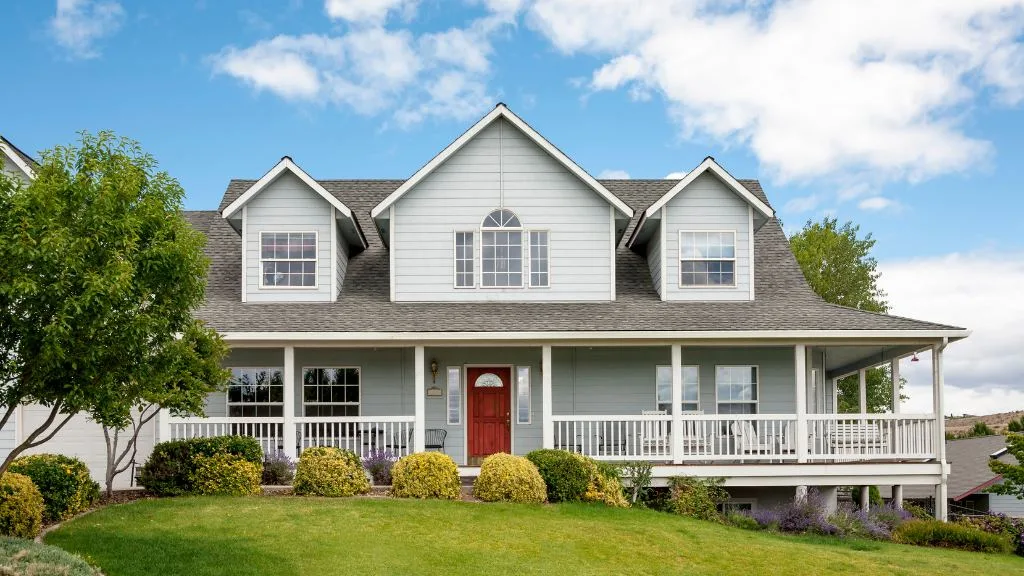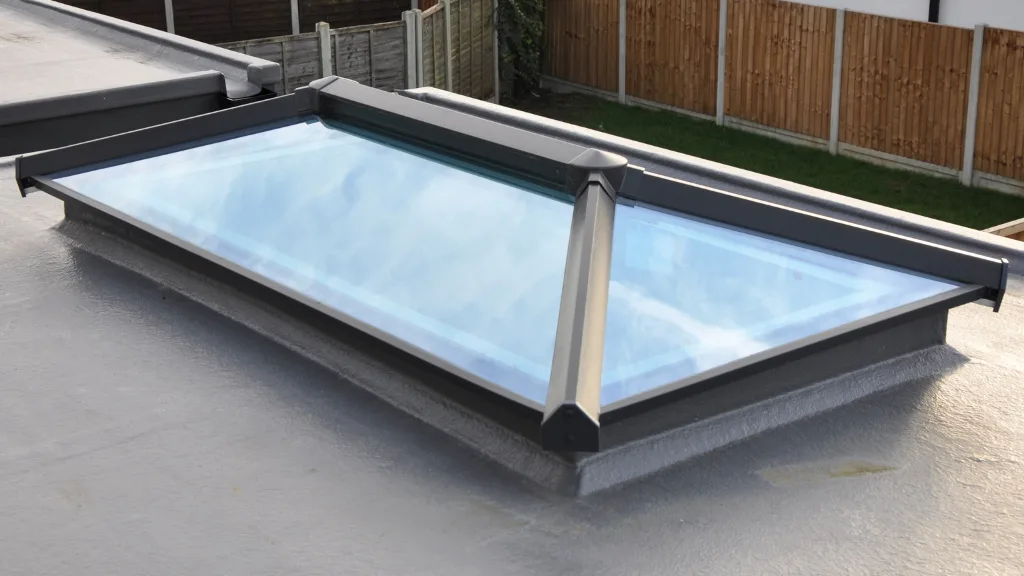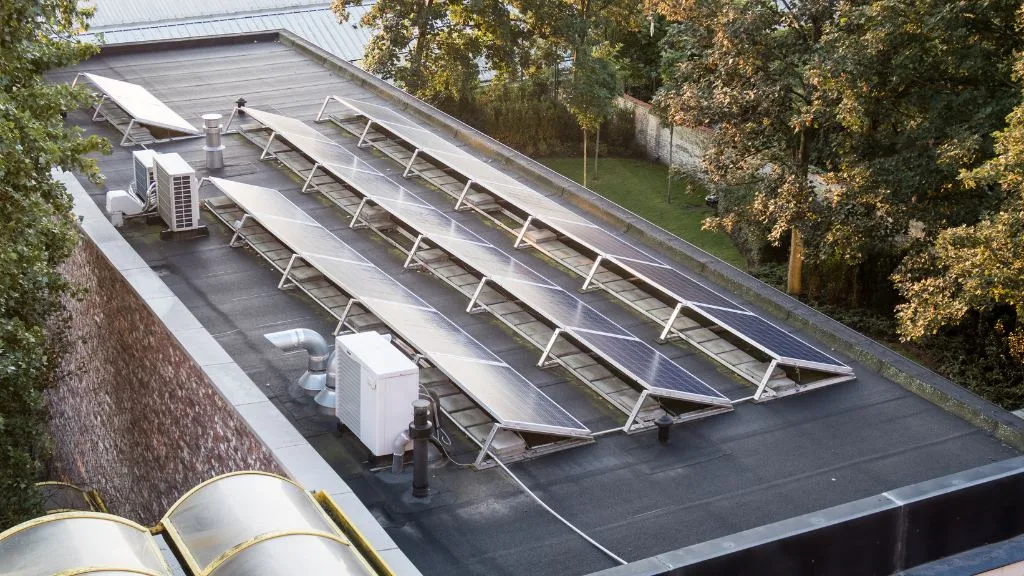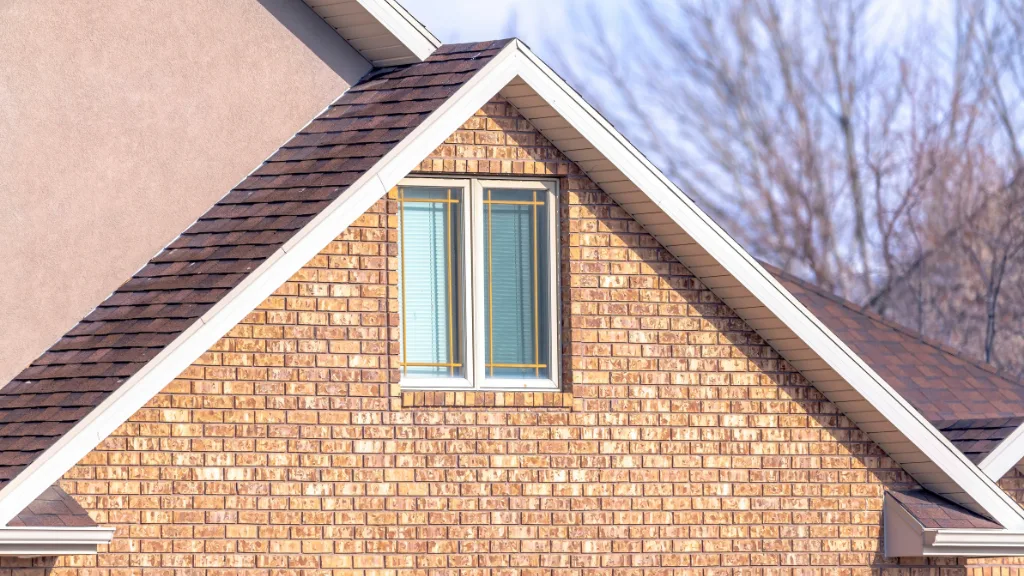
There are many reasons to convert a flat roof to a pitched roof. One of the main reasons is aesthetics. The style and attractiveness of your home will increase with this type of conversion, but there are also other benefits.
If you have a flat roof, converting to a pitched roof can be a great way to add value and longevity to your home.
It is important that you know the pros and cons of doing so before making any drastic changes. This article will cover some of the key points that you should consider when deciding whether or not this project is right for you.
What is a Pitched Roof?
A pitched roof is one that has a slope, or angle. The pitch of the roof can vary depending on your needs and preferences. A lower pitch will give you more floor space, while a higher one will last longer.
A pitched roof is most commonly found in home-building. Designers are able to create wonderful buildings with interesting features by using the slope of the roof to their advantage.
Before building a home, it is important to know what kind of slope your region requires. Too much or too little of an incline can be problematic.
What is a Flat Roof?
A flat roof is any roof design that does not have a sloping surface. Rather than angling inwards, which allows water to drain off easily, flat roofs are laid at their highest point across the center.
They can be built of many materials, including asphalt shingles, concrete pavers or tar and gravel (among others), and feature a ventilation space to promote drainage and prevent leaks.
A flat roof was originally made by placing sheets of wood or other waterproof material over the joists of a building. This is where the term “flat roof” came from, as this particular method had no incline.
In contemporary times, flat roofs are made from a variety of materials that drain well, such as asphalt shingles.
They can be built up in much the same manner as other kinds of roofs–with rafters and plywood sheathing–and have all the structural components required for a building to remain safely standing in a high wind or other extreme weather event.
A flat roof is different from a low-slope roof, which has an incline of 1 to 6 inches per foot. These roofs are typically found on commercial buildings where large expanses of roofing area are needed.

Is Converting a Flat Roof to a Pitched Roof a Good Idea?
A pitched roof is a more efficient design than a flat roof, as the latter has nowhere for rainwater to easily run off. With that said, some people have converted their flat roofs into those with pitches.
There are plenty of good and bad reasons why you might want to convert your flat roof to a pitched one:
- The first reason why you might want to convert your flat roof into a pitched one is if the building in question is very large and in danger of leaking.
- Because flat roofs in general do not provide much in the way of rainwater runoff, their design means they are more vulnerable to leaks than pitched roofs would be.
- Another reason why you might want to consider converting your flat roof into a pitched one is if you are having problems keeping it clean.
- Some flat roofs, particularly those which have not been properly maintained, can accumulate muck and grime over time.
- As this dirt tends to be quite slippery when wet, it can also increase the risk of someone falling off the roof should they step on part of it.
- Finally, one other reason why you might consider converting your flat roof into a pitched one is to give yourself additional space in your attic.
- If your roof is relatively low and you would like more headroom, turning it into a pitched roof could be an option for you.
Is Converting a Flat Roof to a Pitched Roof Going to Cost A Lot?
One reason why you might hesitate to convert your flat roof into a pitched one is because you believe it will be too expensive. However, the truth is that the cost of such an endeavour really depends on what type of construction method you use and how tall your roof already is.
If for example you opt to re-slate your flat roof, you will probably need to hire a professional roofer. This is because such work requires special equipment and plenty of experience with roofing in general.
Although it can be expensive, the cost of having someone re-slate your flat roof will be far lower than that of getting a pitched one created from scratch.
The Difference Between a Flat Roof and a Pitched Roofs
The main difference between a sloped roof and a flat roof is that you rarely see sloped roofs in commercial buildings. They are most often found in homes or other smaller buildings, such as sheds.
The reason for this isn’t that they aren’t functional, but because they require more upkeep to keep them from leaking.
Flat roofs aren’t subjected to harsh weather, so they don’t have to be as strong. In fact, flat roofs are generally not recommended for any roofing materials that require a steep slope in order to move water or snow off of them efficiently.
Flat roofs also cannot hold the same amount of weight that sloped roofs can unless they have supporting beams running through them.
The construction of a flat roof is different from that of a sloped one in order to support the extra weight of the material used for the roof.
Sloped roofs also can be designed to channel rain or melted snow away from vulnerable areas such as doors and windows more effectively.
In some cases, this type of design can make it easier for people working on the roof to move around without worrying about falling off.
Sloped roofs also help homes blend in better with their environment because the way they’re designed has a natural look and feel.
Pros and Cons of Having Flat or Pitched Roofs
There are some downsides to sloped roofs, however. The materials used for sloping a roof take up more space than those needed for flat roofs.
Pros of Having a Flat Roof
- It’s an easy, simple design – A lot of people love the simplicity of flat roofs but for some reason think that they are very expensive to build and maintain.
- Because of this false impression, many builders opt for other types of roofs which aren’t as good because the flat roof is not only cheaper to construct but also saves money in the long run in roofing and/or insulation expenses.
- Aesthetically decorative – The flat roof is aesthetically very beautiful and can help add value to a house.
- It’s important to choose the right material when making a flat roof, because if not done properly it could turn into an eyesore.
- Some materials such as slate, tile and metal can serve as a great decorative accessory.
- The flat roof is even more appealing if it’s paired with several trees as this will ensure the home has lush greenery and possibly some green foliage that will help insulate the house which keeps heating and cooling costs down.
- Perfect for commercial buildings – The flat roof is perfect for commercial buildings because it has a low profile. It’s also easy to customize and use as an outdoor space, which makes it very versatile.
- A simple installation process – The flat roofs are installed using trusses which are mounted on the exterior of the building.
- This method doesn’t require any interior modifications, so there’s no need for construction.
- The trusses can support a flat roof and because of their simple design they don’t cost as much as other types of roofs.
- You can use the space on your flat roof – As mentioned before, some commercial buildings choose to incorporate greenery to help keep heating and cooling costs down. Other examples include solar panels and hot tubs.

Cons of Having a Flat Roof
- All types of roofs can be dangerous – Some people think that having a flat roof reduces safety but in fact, it’s much safer to have a flat roof than one with a pitch.
- A pitch is much easier to climb and often provides no safety barriers.
- Flat roofs do require maintenance and repair work – Even though they don’t need nearly as much repair work as other roofs, they do need to be inspected annually.
- This is especially true for commercial buildings that have a flat roof.
- A flat roof is harder to walk on – All roofs are slippery when it’s snowing or raining because of ice and snow buildup, but this problem with the flat roof increases exponentially because of its slick surface.
- The roof material has to be durable – A flat roof’s material must be one that doesn’t corrode or rust easily and will last a long time in all kinds of weather, especially the ones where water and sunlight play a big factor.
- This means choosing materials such as metal and tile can add up pretty quickly since they are usually more expensive.
- A flat roof is not effective when there’s a lot of rainfall – Because the flat roof has no pitch, it doesn’t channel rainwater anywhere.
- This means that in high rainfall areas, water can seep into holes or gaps which will damage your home, especially if you have wooden flooring in the basement.
- If this isn’t fixed immediately it could even lead to mold growth or worse – flooding.
Pros of Having a Pitched Roof
A pitched roof is a very good thing to have on any home. A pitched roof has many benefits that makes it space efficient and protected from the elements of nature.
If you are thinking of building a new house, adding onto your existing house, or just need some repair work on your current roof, this may be an option worth considering. Below are some of the pros to having a pitched roof.
- Space efficiency – A pitched roof is very space efficient because it uses vertical space efficiently.
- A flat roof would require additional interior ceiling height in order to allow for ventilation, whereas a pitched roof requires little to no extra headroom due to gravity assisting with air flow.
- There are many different angles that can be applied to a pitched roof, allowing for each room of the house to utilize vertical space as much as possible.
- Protection from the sun and rain – The pitch or angle on your roof will allow for water and snow to easily slide off rather than remaining on the roof and potentially leaking into your home.
- Depending upon which direction the angle faces, protection against the hot afternoon sun or cold north winds can be achieved.
- Protection from snow buildup – The pitch on your roof will allow for any snow to slide off of it rather than remaining on top.
- This allows you to avoid the extra work required in the winter time to remove excess snow that may build up during a particularly snowy season.
- If you are hoping to sell your house in the winter time, this can be very advantageous for potential buyers who view homes hoping to avoid a future of shoveling snow off their roof.
- Ease of roof maintenance – A pitched roof is very easy to maintain and keep in good condition.
- One simply needs to sweep away debris from the roof with a broom and inspect it regularly for any damage.
- A flat roof requires considerably more effort in order to repair any potential damage.
- Durability – The durability of a pitched roof is far greater than that of a flat roof, as the pitches help divert water away from vulnerable areas such as vents and chimneys which can easily become damaged when exposed to the elements.
- It is much easier to cover these areas when they are protected under a wider roof that has more angles or pitches.
Cons of Having a Pitched Roof
There are very few cons to having a pitched roof, but there are times where it may not be the best option for your particular situation.
There are also things that you should consider before building or repairing your roof. Below are some of the cons to having a pitched roof.
- Higher initial cost – Pitched roofs are more expensive than flat roofs, but this can easily be offset by their durability and ease of maintenance.
- More difficult install process – Some styles of pitched roofs are very difficult to install, requiring two or more people for installation.
- This is one reason that a flat roof may be more appealing, as they are simply rolled out and then fastened.
- Less headroom – Flat roofs have a lot of headroom, while pitched roofs typically have less in order to protect from water damage.
- This isn’t an issue for modern homes that have higher ceilings or when you aren’t planning on using all of the headroom available.
- Possible water damage – Without proper care, your roof can end up leaking if you have a high pitch or angle to it.
- This typically only becomes an issue in the case of poor installation or when neglectful in caring for your roof.
Flat roofs are generally cheaper to build than pitched ones, but this does come at the cost of them being less efficient.
Although converting your flat roof into a pitched one can be an effective way of solving certain problems, it is important that you only do so if you think the benefits will outweigh any potential drawbacks.


